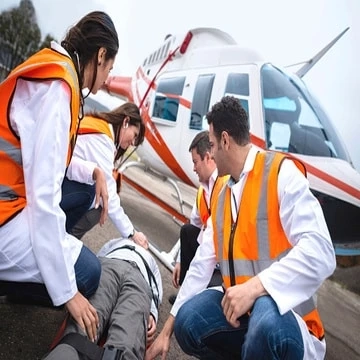For many medical facilities, patient transport services are an integral part of daily operations. Patient transport services provide safe and efficient transportation for patients from one place to another. Whether a patient is transferring from a hospital to a rehabilitation center or between two different medical facilities, patient transport services ensure that the journey is as comfortable and hassle-free as possible.
Why Use Patient Transport Services?
Patient transport services are essential for ensuring the safety and comfort of patients during their travels. It is important to choose a reliable service that offers experienced specialists who can provide attentive care throughout the entire process. This includes monitoring vital signs, providing assistance with activities of daily living, and transporting specialized equipment as needed. Additionally, patient transport services should be able to handle emergency situations quickly and efficiently while ensuring that the patient’s needs are met at all times.
Types of Patient Transport Services
There are several types of patient transport services available depending on the needs of the particular medical facility or individual. Non-emergency transport is used for routine trips between medical facilities or for medical appointments in which the patient does not require immediate care. Emergency transport is used when there is an urgent need for a patient to be transferred from one place to another due to an unforeseen illness or injury. Lastly, the interfacility transfer occurs when a patient must be transported from one facility (such as a hospital) to another (such as a rehabilitation center).
What Is Involved With Patient Transport?
When you use a patient transport service, you can expect your vehicle to be well-maintained and comfortable. The driver will be experienced and knowledgeable about the area they\'re operating in, as well as any necessary safety protocols. Depending on the type of transport you require (ambulance or NEMT), you can also expect to have access to medical equipment on board if needed. This could include items like oxygen tanks or monitors for heart rate or blood pressure readings.
How Does Patient Transport Help?
Patient transport is an invaluable service that helps people get where they need to go quickly and safely. It eliminates the hassle of finding your own transportation—especially if you have limited mobility—and ensures that patients get to their destinations on time without having to worry about delays due to traffic or other circumstances beyond their control. Additionally, it can provide peace of mind for family members who may not be able to accompany loved ones on their trips but still want them to arrive safely at their destination with minimal stress or discomfort.
Conclusion:
Patient transport services provide safe and efficient transportation for patients from one place to another in both non-emergency and emergency situations. Choosing the right service ensures that patients receive attentive care throughout their journey while meeting their individual needs at all times. Medical facilities should take into consideration what type of service best fits their needs before selecting a provider so that they can rest assured knowing that their patients are receiving quality care while being transported safely and comfortably.



